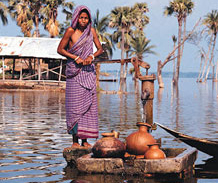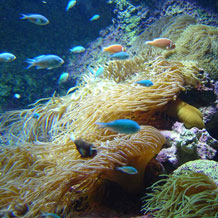Consequences of greenhouse-effect temperature rises
Predicting the consequences of global warming is one of the most difficult tasks for the world’s climate researchers. This is because the natural processes that cause rain, hail and snow storms, increases in sea level and other expected effects of global warming are dependent on many different factors. It is also difficult to predict the size of the emissions of greenhouse gases in the coming decades, as this is determined to a great extent by political decisions and technological breakthroughs. How might this affect Europe?

Many of the effects of global warming have been well-documented, and observations from real life are consistent with earlier predictions.
The effects that can be predicted include:
More drought and more flooding

When the weather gets warmer, evaporation from both land and sea increases. This can cause drought in areas of the world where the increased evaporation is not compensated for by more precipitation.
In some regions of the world this will result in crop failure and famine especially in areas where temperatures are already high. The extra water vapour in the atmosphere will fall again as extra rain, which can cause flooding in other places in the world.
Less ice and snow

Worldwide, glaciers are shrinking rapidly at present. Ice appears to be melting faster than previously estimated. In areas that are dependent on meltwater from mountain areas, this can cause drought and lack of domestic water supply.
According to the IPCC, up to a sixth of the world's population lives in areas that will be affected by meltwater reduction.
More extreme weather incidents
The warmer climate will probably cause more heatwaves, more violent rainfall and also an increase in the number and/or severity of storms.
Rising sea level

Sea level rises because of melting ice and snow and because of the thermal expansion of the sea (water expands when warmed). Areas that are just above sea level now, may become submerged.
For example, some Pacific Island nations are expected to be partially or completely submerged by the end of the century. Coastal and shallow marine plants and animals will be affected, for example mangroves and coral reefs.
In countries with large areas of coastal lowland there will be a dual risk of river floods and coastal flooding, which will reduce the area for living and working. Coastal defences will need to be strengthened, and river levees will need to be developed. The increase in standing water may allow more insects like mosquitoes and diseases spread by insects, such as Lyme’s disease.
The most recent meetings of scientists (2009 Climate Change Summit, Copenhagen (COP15) suggest that the consequences of increase in temperature caused by the greenhouse effect may be more severe than were previously thought.







